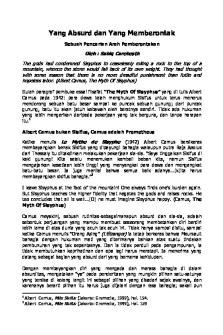YIN YANG THEORY PDF

| Title | YIN YANG THEORY |
|---|---|
| Author | jann makaila |
| Course | Chinese Medicine |
| Institution | Trent University |
| Pages | 2 |
| File Size | 59.2 KB |
| File Type | |
| Total Downloads | 5 |
| Total Views | 140 |
Summary
YIN YANG THEORY ...
Description
YIN YANG THEORY -
Balance and harmony Opposing forces Yin-dark/yang-bright side 700bc: Iching Solid and broken lines in the flag Broken lines are yin. Solid lines are yang All phenomenon’s in the world is represented by those lines 500-200bc yin yang school developed. Yin is the shady side of the mountain Yang side is the sunshine mountain Observation of nature Convenient labels to label things Everything can be classified by yin and yang according to the school Nothing is exclusively yin and yang Process of change that is constantly taking place is what yin and yang symbol symbolizes Belational Represents wholeness Interdependent One contains the seed of the other as seen in the symbol. As yang reaches a maximum yin quality starts to happen so they kinda transform into each other. Ex. Day and night Cyclical quality
GENERAL QUALITIES: QUALITIES OF YANG Bright day Warmer Heaven dry Positive Fire Spring/summer Light Upward Activity Loud Male (ambitious, active, fire) Energy Visible
QUALITIES OF YIN Dark Night Cooler Earth Moist Negative Water Winter/autumn Heavy Downward Rest Quiet Female (water, quiet quality) Matter hidden
sun
moon *edema* *menopause symptoms*
ANATOMICALLY: YANG Superior Exterior Lateral Distal Function (active) Blood flow Agitation Qi (energy)
YIN Inferior Interior Medial Proximal Matter (rest) Blood cells calm blood
5 PRINCIPLES OF YIN/YANG 1. All things have 2 facets (yin and yang) 2. Any yin and yang can be further divided into other yin and yangs ex. Knee and thigs in comparison knee is more yin because its more inferior but knee in comparision to ankle is more yang. 3. Yin and yang mutually create each other. Function only exist with body and matter. Interdependent. 4. Control each other. Ex. Normal functioning of the body but also pathologically in the body. Body has a way of attaining balance. Ex. Shiver because cold out so u warm down or sweating when it’s hot, u cool down. Circadian rhythm so when its night yang energy drops so we can calm down and sleep vice versa. Pathological effect: too much of one can injure the other. Ex. Heat stroke. Too much cold or too much dampness too much lethargy and stagnation or vice versa can be harmonized again. 5. Yin and yang transform into each other. Ex. High fever leads to weaker health condition thus yang to yin....
Similar Free PDFs

YIN YANG THEORY
- 2 Pages

Yin Yang Balance
- 26 Pages

Yang Absurd dan Yang Memberontak
- 7 Pages

Smell - Professor Jian Yang
- 3 Pages

Rubah yang Jahil
- 3 Pages

PERNIKAHAN KRISTEN YANG HARMONIS.pdf
- 125 Pages

Analisa Paragraf yang Salah.docx
- 3 Pages

TAI CHI YANG 24
- 3 Pages

Sejarah Dunia yang Disembunyikan
- 633 Pages

Contoh Makalah yang Benar
- 7 Pages
Popular Institutions
- Tinajero National High School - Annex
- Politeknik Caltex Riau
- Yokohama City University
- SGT University
- University of Al-Qadisiyah
- Divine Word College of Vigan
- Techniek College Rotterdam
- Universidade de Santiago
- Universiti Teknologi MARA Cawangan Johor Kampus Pasir Gudang
- Poltekkes Kemenkes Yogyakarta
- Baguio City National High School
- Colegio san marcos
- preparatoria uno
- Centro de Bachillerato Tecnológico Industrial y de Servicios No. 107
- Dalian Maritime University
- Quang Trung Secondary School
- Colegio Tecnológico en Informática
- Corporación Regional de Educación Superior
- Grupo CEDVA
- Dar Al Uloom University
- Centro de Estudios Preuniversitarios de la Universidad Nacional de Ingeniería
- 上智大学
- Aakash International School, Nuna Majara
- San Felipe Neri Catholic School
- Kang Chiao International School - New Taipei City
- Misamis Occidental National High School
- Institución Educativa Escuela Normal Juan Ladrilleros
- Kolehiyo ng Pantukan
- Batanes State College
- Instituto Continental
- Sekolah Menengah Kejuruan Kesehatan Kaltara (Tarakan)
- Colegio de La Inmaculada Concepcion - Cebu





